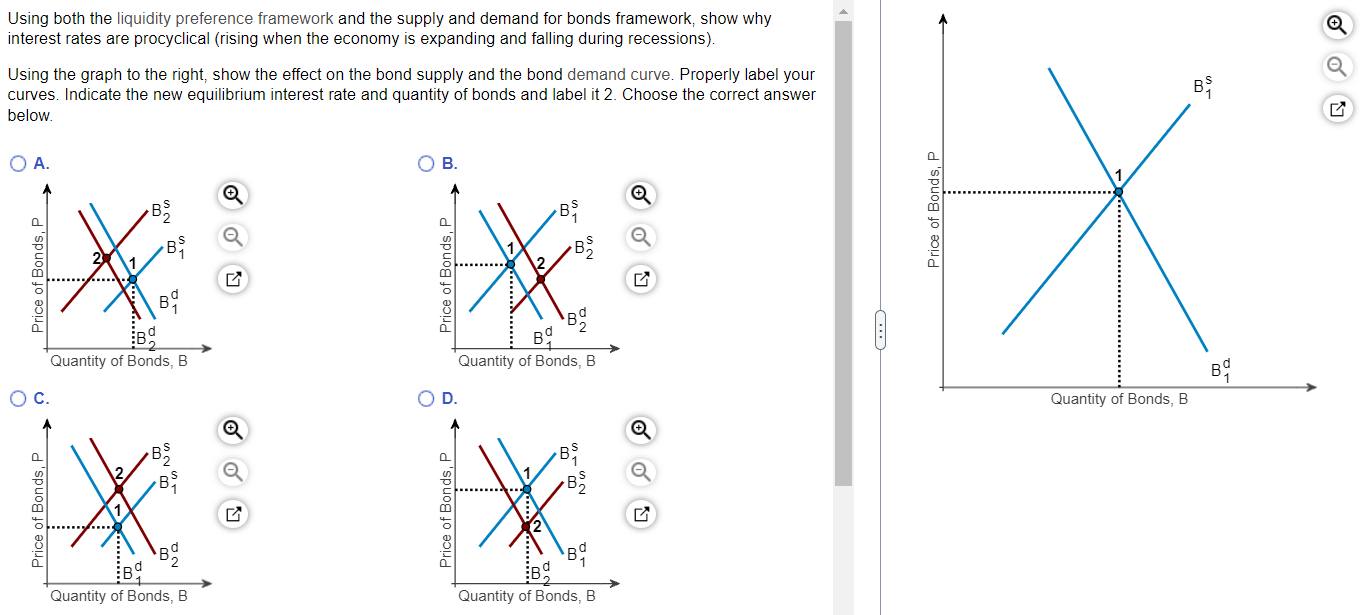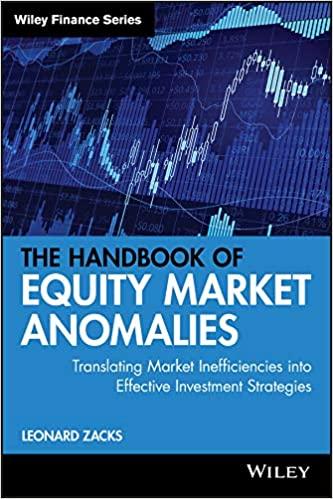Question
1.) An economic indicator is procyclical if it rises when the economy is expanding and falls during recessions, countercyclical if it falls when the economy

1.) An economic indicator is procyclical if it rises when the economy is expanding and falls during recessions, countercyclical if it falls when the economy is expanding and rising during recessions, and lagging if it changes only after the economy has begun to follow a particular trend.
Interest rates (remain the same, increase, decrease) when there is a business cycle expansion. Therefore, interest rates are said to be (procyclical, lagging, countercyclical).
2.) Using the liquidity preference framework, when the economy expands,
A.
the demand for money will decrease, shifting the money demand curve to the right.
B.
the demand for money will decrease, shifting the money demand curve to the left.
C.
the demand for money will increase, shifting the money demand curve to the left.
D.
the demand for money will increase, shifting the money demand curve to the right.
Using both the liquidity preference framework and the supply and demand for bonds framework, show why interest rates are procyclical (rising when the economy is expanding and falling during recessions). Using the graph to the right, show the effect on the bond supply and the bond demand curve. Properly label your curves. Indicate the new equilibrium interest rate and quantity of bonds and label it 2. Choose the correct answer below. C. C. nStep by Step Solution
There are 3 Steps involved in it
Step: 1

Get Instant Access to Expert-Tailored Solutions
See step-by-step solutions with expert insights and AI powered tools for academic success
Step: 2

Step: 3

Ace Your Homework with AI
Get the answers you need in no time with our AI-driven, step-by-step assistance
Get Started


